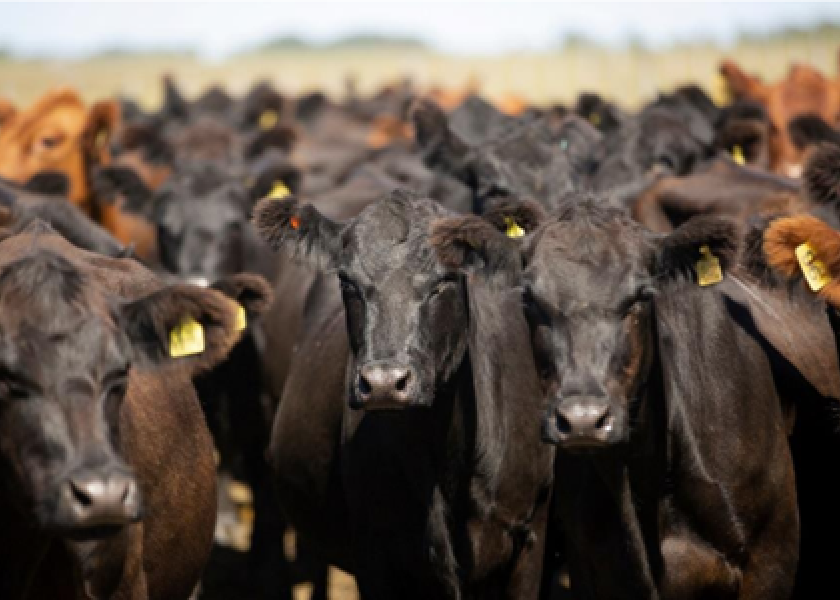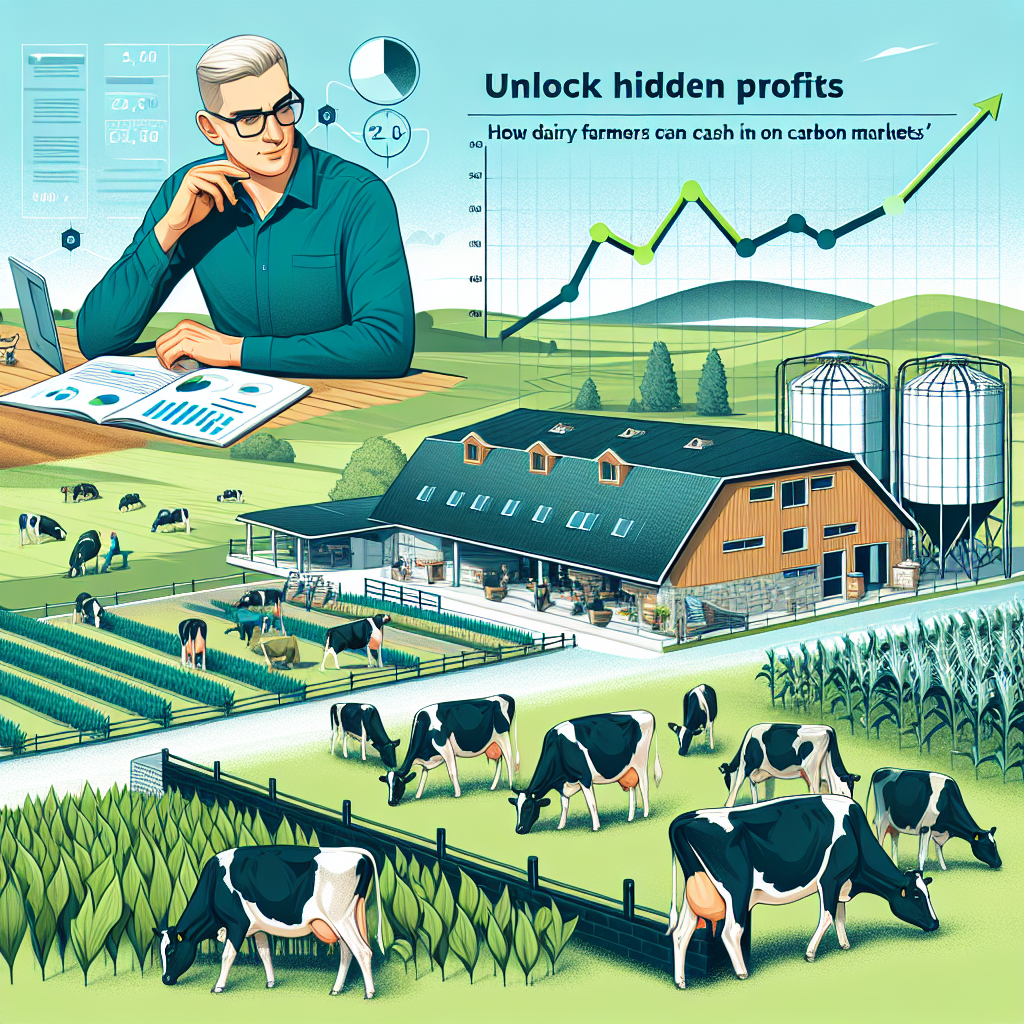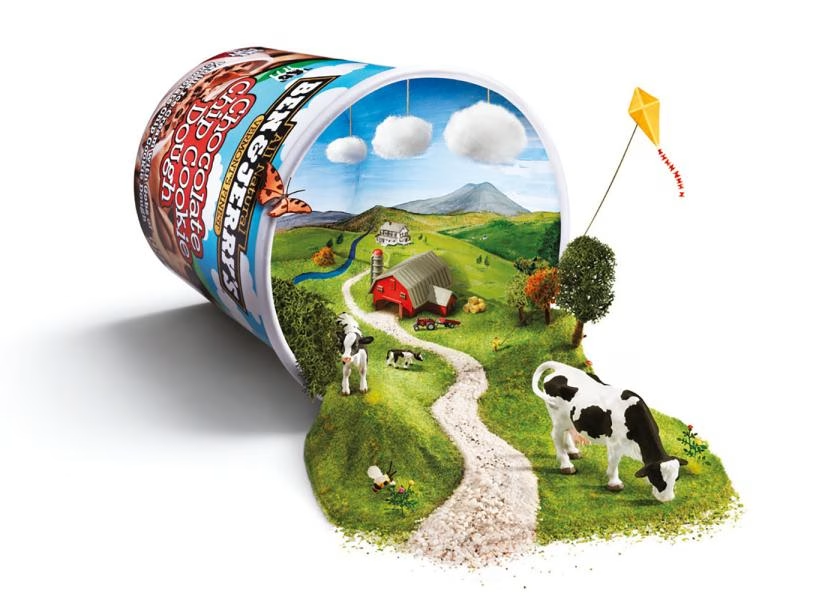Find out how new feed additives can cut methane emissions on dairy farms. Ready to make your dairy farm more sustainable and profitable?
Summary: Methane emissions from dairy farms are a significant issue. This potent greenhouse gas plays a huge role in climate change. Reducing it requires innovative nutrition strategies and feed additives. Farmers can significantly cut methane emissions by adjusting dairy cow diets while boosting farm profitability. Did you know methane accounts for 40% of agricultural greenhouse gas emissions in the US? Farmers can use feed additives and macroalgae to improve digestion and tackle this. Switching to high-quality forages like corn silage can reduce methane yield by up to 61% and increase milk yield by 3 kg/day. However, balancing these benefits with potential downsides like lower milk fat yield and profitability impacts is crucial.
- Methane emissions are a significant issue for dairy farms, impacting climate change.
- Adjusting dairy cow diets can cut methane emissions and boost farm profitability.
- Methane accounts for 40% of agricultural greenhouse gas emissions in the US.
- Feed additives and macroalgae can improve digestion and reduce methane emissions.
- Switching to high-quality forages like corn silage can reduce methane yield by up to 61% and increase milk yield by 3 kg/day.
- Balance these benefits with potential downsides like lower milk fat yield and impacts on profitability.

Did you realize that what you feed your cows may help rescue the environment? Yes, you read it correctly. Dairy producers like you are at the forefront of fighting climate change. With the urgent need to reduce methane emissions growing by the day, novel feed additives might be the game changer we have been waiting for [Ocko et al., 2021]. Methane, a greenhouse gas 28 times stronger than carbon dioxide, contributes considerably to global warming. Addressing livestock methane emissions may significantly lower animal products’ carbon footprint while also helping mitigate climate change. So, what if a simple change in your cows’ diet could dramatically improve your farm’s environmental impact? The potential is excellent. Let us explore the intriguing realm of nutrition and feed additives to reduce enteric methane emissions. Are you ready to look at how feeding your herd intelligently might help?
Methane Matters: Why It is Crucial for Dairy Farms
Let us discuss methane. It is a significant problem, mainly when it originates from dairy farms. Why? Methane is a potent greenhouse gas that traps significantly more heat in the atmosphere than carbon dioxide. While it does not stay as long as CO2, its short-term effects are much more severe.
Methane emissions from dairy cows contribute significantly to the issue. Methane from dairy cows accounts for 40% of total agricultural greenhouse gas emissions in the United States [USEPA, 2022]. That is a significant portion. Every cow’s digestive tract generates methane, eventually released into the environment and contributing to climate change.
So why should we care? Reducing these emissions may significantly influence total greenhouse gas levels. Addressing methane can decrease global warming, which will dramatically affect us. This is where nutrition and feed additive innovations come into play, with potential options to reduce emissions.
Innovative Feed Additives: A Game-Changer for Dairy Farming
Dairy farmers are entering a game-changing territory when we speak about novel feed additives. These chemicals are added to cow feed to address one of the industry’s most pressing environmental issues: methane emissions.
Consider 3-nitrooxypropanol (3-NOP), for instance. This supplement has shown promising effectiveness in reducing methane generation in the rumen. It is meticulously designed to inhibit the enzyme responsible for methane production. Recent research suggests that adding 3-NOP to cow feed could reduce methane emissions by up to 30% (Hristov et al., 2022). This is a significant step towards a more sustainable future for dairy farming.
Macroalgae, especially species such as Asparagopsis taxiformis, provide another intriguing approach. The red seaweed includes bromoform, a chemical that affects the rumen’s methane production process. Trials have shown that these seaweeds may reduce methane by up to 98% in certain circumstances (Lean et al., 2021).
As you can see, the proper feed additives improve your herd’s digestion and health and help reduce greenhouse gas emissions. This is a win-win for dairy producers who prioritize sustainability.
Have You Ever Wondered How Tweaking Your Dairy Cows’ Diet Can Help Reduce Methane Emissions?
Have you ever wondered how changing your dairy cow’s diet might help minimize methane emissions? It is about saving petrol and making better-informed, efficient feed decisions. Let us look at how diet modification tactics, such as boosting dietary starch or employing high-quality forages, may substantially impact.
Boosting Dietary Starch
One proven method to cut methane emissions is upping the starch content in your cows’ diet. Starch promotes propionate production in the rumen, which uses hydrogen that would otherwise be converted into methane. For instance, studies have shown that increasing dietary starch from 17% to 22% can significantly reduce methane yield by up to 61% (Olijhoek et al., 2022). Another exciting study found that a 30% increase in dietary starch boosted milk yield by around 3 kg/day while cutting methane emissions (Silvestre et al., 2022).
Embracing High-Quality Forages
Quality forages, like corn silage and brown mid-rib (BMR) corn silage, also play a critical role in methane reduction. Corn silage, which has a higher starch content than legume forages, has been shown to lower methane yield by about 15% when replacing alfalfa silage (Hassanat et al., 2013). BMR corn silage reduces methane emissions and boosts digestibility, increasing feed intake and milk production (Hassanat et al., 2017).
Potential Trade-Offs
However, it is essential to balance these benefits against potential downsides. For example, while increasing dietary starch can reduce methane, it can also lead to a drop in milk fat yield. A study showed that for every 5% increase in dietary starch (from 25% to 30%), methane yield decreased by about 1 g/kg DMI, resulting in a 0.25 percentage unit drop in milk fat content. This drop in milk fat content could potentially impact your farm’s profitability, mainly if your milk pricing is based on butterfat content. Similar trade-offs can occur with high-starch forages, so it’s essential to consider these factors when making feed decisions.
Dietary modification provides a realistic way for dairy farms to reduce methane emissions. You may have a significant environmental effect by carefully increasing dietary starch and employing high-quality forages. Remember to assess the advantages against any trade-offs in milk composition to keep your farm both environmentally friendly and profitable.
Feed Additives: Boosting Efficiency and Profitability
Feed additives promise to lower methane emissions while also providing significant economic advantages. These supplements may immediately benefit your bottom line by increasing feed efficiency and milk output.
Consider this: Better feed efficiency means your cows get more nutrients for the same quantity of feed. This results in cheaper feed expenditures for the same, or even more significant, milk production levels. According to statistics, some additives may improve feed efficiency by up to 15%. Consider the cost savings across an entire herd and a year; the figures may grow.
Furthermore, higher milk production is a significant advantage. Studies have shown that certain feed additives may significantly increase milk output. For example, certain supplements have been shown to boost milk output by up to 6%. This rise is more than a volume gain; it frequently includes enhanced milk quality, which may command higher market pricing.
Furthermore, certain supplements may improve your herd’s general health and production, lowering veterinary bills and boosting lifespan. Healthier cows are more productive and less prone to diseases requiring expensive treatments and downtime.
When contemplating investing in feed additives, weighing the upfront expenditures against the possible savings and advantages is critical. Yes, there is an initial cost, but the return on investment may be significant when considering increased efficiency, milk output, and overall herd health.
Profitability is essential for maintaining a sustainable dairy farm, and feed additives’ financial benefits make them an appealing alternative. They not only promote environmental aims, but they also provide a practical solution for increasing agricultural efficiency and output.
Ready to Take Action on Reducing Methane Emissions on Your Farm?
Are you ready to take action to minimize methane emissions on your farm? I have some practical advice to assist you in making the most of these tactics while keeping track of expenses, availability, and the effects on milk output and profitability.
Choose the Right Feed Additives Wisely
- 3-NOP: This methane inhibitor may significantly reduce emissions, but its cost must be evaluated. A bulk purchase may lower overall expenditures. To get better prices, ask vendors about long-term contracts.
- Corn Silage: Including additional corn silage in the diet may be beneficial but may diminish milk fat content. Monitor your herd’s performance to establish the ideal balance for maximum output.
- Alternative Forages: Experiment with wheat, triticale, and sorghum silage. Begin with minor additions to assess the influence on your herd’s milk supply and adapt appropriately.
Balancing Costs and Benefits
- Initial Investment: Certain feed additives might be expensive. Calculate the return on investment by considering the possible increase in milk output and enhanced efficiency in methane reduction.
- Long-Term Gains: While the initial expenses may be more significant, the long-term advantages of lower emissions and maybe enhanced herd health might offset the initial investment. Perform a cost-benefit analysis to make an educated choice.
- Availability: Maintain a consistent supply of desired feed additives and forages. Work with dependable suppliers to avoid delays in your feeding schedule.
Monitoring and Adjustments
- Regular Monitoring: Maintain records of milk output, feed consumption, and methane emissions. Use the data to optimize diets and additive amounts.
- Trial and Error: It is OK to experiment. Not every strategy will be effective immediately. Depending on your herd’s specific reaction, adjustments will provide the most significant outcomes.
- Consult Experts: Work with animal nutritionists or dairy experts to develop food plans for your farm. Their knowledge may assist you in navigating the possibilities and determining which is the most excellent match for your organization.
Impact on Profitability
- Milk Production: Some dietary adjustments may lower methane emissions while simultaneously affecting milk fat content. Monitor your herd to ensure that total milk output stays consistent or increases.
- Farm Profitability: Weigh the cost of feed additives against potential savings in feed efficiency, decreased health risks, and possible incentives for cutting greenhouse gas emissions.
Remember that each farm is unique, and what works for one may not work for another. Begin modestly, observe, and modify as required to get the ideal balance for your agriculture. Implementing these ideas intelligently may lead to a more sustainable and successful dairy enterprise.
Challenges and Questions: Navigating the Complex Landscape of Methane Mitigation in Dairy Farming
While existing feed additives and diet modification tactics promise to lower methane emissions, they have obstacles. For example, the feasibility of applying bromoform-based macroalgae on a large scale remains to be determined, owing to variable effects over time and the potential adaptability of rumen microorganisms. Furthermore, adjusting diets to boost concentrate inclusion or starch levels might reduce milk fat output and farm profitability.
The long-term impacts of these tactics are an essential topic that needs additional investigation. While 3-nitrooxypropanol has demonstrated considerable decreases in methane emissions, its effectiveness may wane with time, emphasizing the need for long-term research spanning numerous lactations. Similarly, the interplay of various feed additives is not entirely understood—could mixing them provide synergistic advantages, or might specific combinations counteract each other’s effects?
Furthermore, we need to investigate how changes in animal diets impact manure composition and consequent greenhouse gas emissions. This aspect is relatively understudied, yet it is critical for a comprehensive strategy to decrease dairy farming’s carbon impact.
Your Questions Answered: Feed Additives & Methane Reduction
What are feed additives, and how do they work to reduce methane emissions?
Feed additives are compounds introduced into dairy cows’ everyday meals to enhance their health, productivity, and environmental impact. Specific additives, such as 3-nitrooxypropanol (3-NOP), target methane-producing microbes in the cow’s rumen, lowering methane emissions during digestion.
Will using feed additives harm my cows?
When used carefully and by the rules, feed additives such as 3-NOP are safe for cows. Many studies have demonstrated that these compounds minimize methane emissions while improving milk output and composition.
Are feed additives cost-effective?
While there may be an initial expenditure, utilizing feed additives may result in long-term cost savings and enhanced profitability. Higher milk production and increased efficiency often balance the expenses associated with feed additives.
Do feed additives affect the quality of milk?
Feed additives do not have a detrimental influence on milk quality. In rare circumstances, they have been demonstrated to marginally enhance milk composition by boosting milk fat content. However, continued monitoring should ensure that additions do not compromise milk quality or safety.
How quickly can I expect to see results from using these additives?
The outcomes might vary, but many farmers see methane reductions and increased milk production within a few weeks of using feed additives. Consistent usage is essential for gaining and sustaining these advantages.
Can feed additives be used with all types of dairy cows?
Feed additives such as 3-NOP have been evaluated and shown to benefit various dairy breeds, including Holstein and Jersey cows. It is always a good idea to contact a nutritionist to customize the addition for your unique herd.
Do I need to change my entire feeding regimen to use feed additives?
Not necessarily. Feed additives may often be introduced into current feeding regimens with minor changes. Monitoring and adjusting the food to achieve the best possible outcomes and animal health is critical.
Where can I find more information on using feed additives for methane reduction?
For more detailed information, visit reputable agricultural research institutions and extension services websites, such as the USDA National Institute of Food and Agriculture or your local agricultural extension office.
The Bottom Line
Reducing methane emissions on dairy farms is more than simply an environmental need; it’s also a chance to improve farm efficiency and production. We investigated how new feed additives and targeted diet tweaks may drastically cut methane emissions. These modifications help make the world a better place while improving milk output and herd health. As the industry transitions to more sustainable methods, it is apparent that every dairy farm has a role to play. So, are you ready to make a change that will help both your farm and the environment?


















